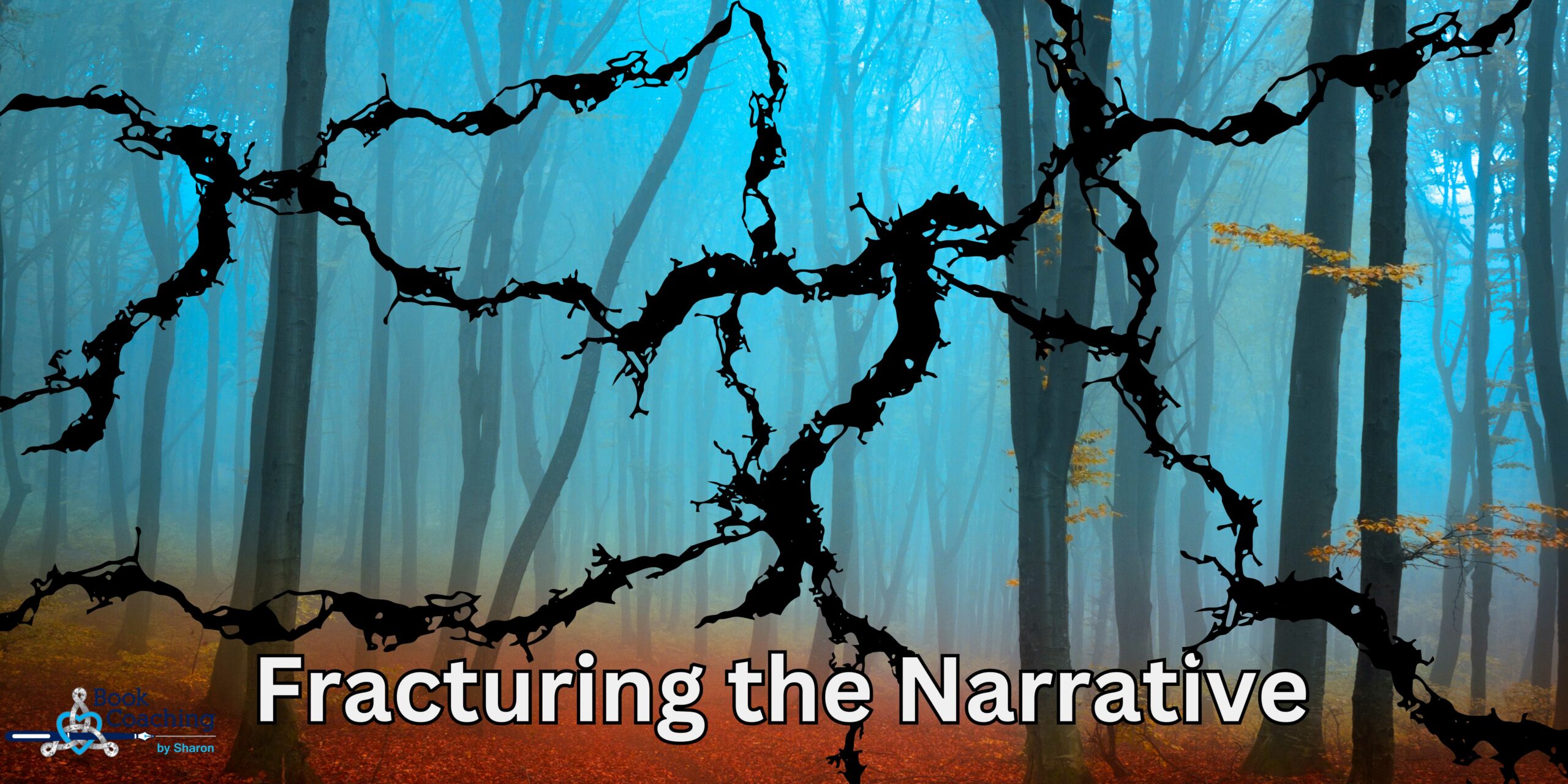Fracturing the Narrative
One of the biggest challenges that I see when clients are doing work that cuts close to the emotional heart is finding a way to distance themselves enough from the experience to fictionalize it. Taking a real-life experience and turning it into fiction requires fracturing the narrative of the event.
My own experience with this took place some years ago when I was writing a short story about a traumatic event that took place in my teen-age years. I was able to write about the experience up to the apex point of that major event and then I was stopped cold. I found myself unable and unwilling to write that part of my personal story.
There’s a reason I am a fiction writer, not a memoirist. A reason that I tell my personal stories and emotional truths through fiction and fictional characters.
So when I got to the point in the story where I was trying to relay this true event in all its trauma and emotionally gut-wrenching reality, I stood up from the computer and said, “I can’t do this. This is not a story that I can tell in this way.”
I paced the house and distracted myself, focusing on anything else—any other thing besides writing about that event. Then, suddenly, I had a moment of realization. I’m a fiction writer I can tell any story I want. I can change the ending. I can make the ending of this event something more cathartic for me. I can make it turn out the way I wish it had.
So I did.
And that short story went on to become a longer work that is now a published novel.
The reason I’m relating this is to validate the idea that there is more than one way to present emotional truth in our writing. We don’t all have to be memoirists, capable of bearing our souls and revealing our real-life flaws to the world to provide truth and meaning to people.
Fiction can provide emotional truth and meaning in a way that is often more accessible to some readers because of the personal and/or narrative distance it provides.
So when I work with clients who are writing fiction and struggling to get at that emotional truth through their characters and their stories, I recommend that they fully embrace fracturing the narrative. Anyone who’s looked at fractured fairytales knows what I’m talking about when I say fracture the narrative.
In her book How to Fracture a Fairy Tale, Jane Yolen describes this fracturing as “breaking them open to pull out the insights, reveal them to the light, and make prophecies, a.k.a. stories.”
To me, there is no difference between fracturing a fairy tale and fracturing our personal narrative by revising our experience in the service of creating fiction.
Fairy tales have always held an important place in relating the world around us. They deal with deep, emotional topics. They were often written to be didactic and to teach a lesson. But relating the events of our lives in a fictional manner works to accomplish the same goal.
Per Yolen, “Sometimes the fracture reveals beauty, sometimes suppurating flesh. Sometimes it causes an itch or discloses a deep wound. Sometimes it makes the reader gasp or laugh, or give a fist bump to the other readers. Sometimes that fracture makes a difference in our life.”
Fracturing your personal narrative is a way to break open the truth, get to the deeper emotional point, and make it accessible to readers, who can then experience that emotional meaning without having to directly experience it.
How do we do this? We do it by filtering the experience through a character lens. We put just enough distance between ourselves and the characters in the story and then we tell the emotional truth through their experiences, which may or may not directly correlate to what happened in real life. And, we can change the outcome, turn it into something we wish would have happened.
Fracturing the narrative of a real-life event allows us to reveal the emotional truth without reliving the trauma. Doing this is not only extremely cathartic for the writer but allows the reader to engage and experience that emotional truth via the fictional narrative.
It’s a win-win.
* * * To get content like this sent direct to your inbox, sign up for my monthly newsletter.
To get content like this sent direct to your inbox, sign up for my monthly newsletter.
Or follow me on Substack.
For more information on Book Coaching, check out my FAQ page.
If you’re interested in what I write, check out my Author site.
And if you write or want to write children’s books, give the Coaching KidLit podcast a listen.

